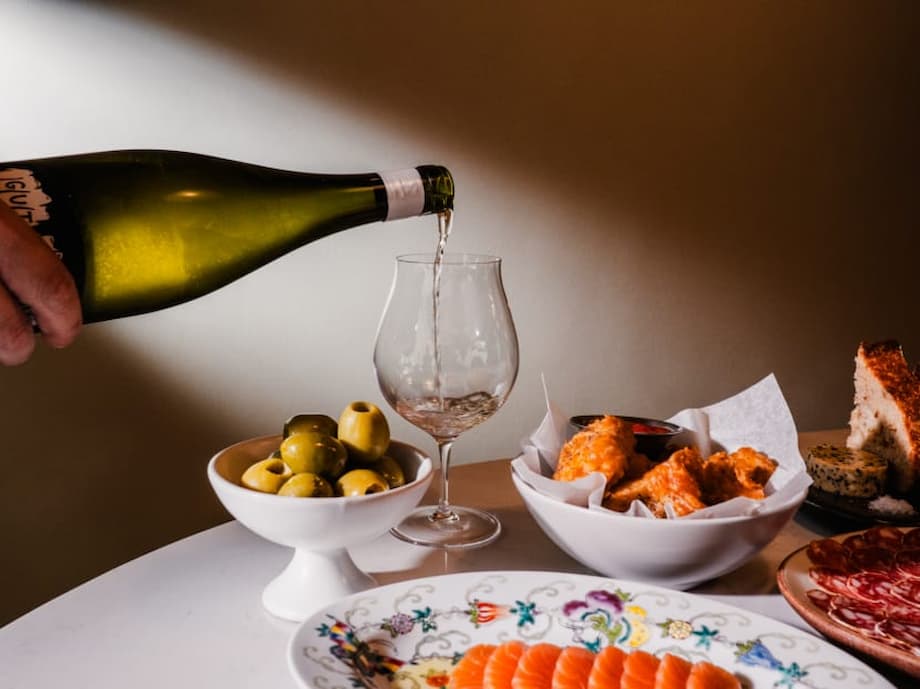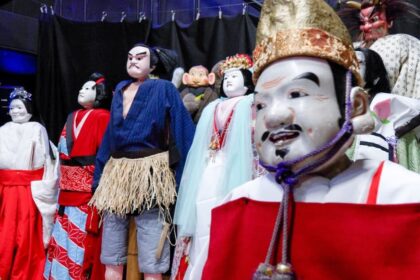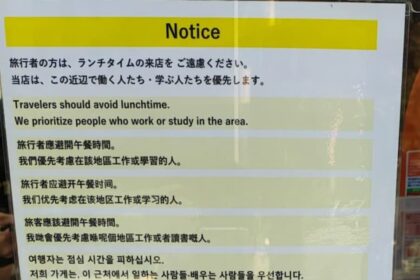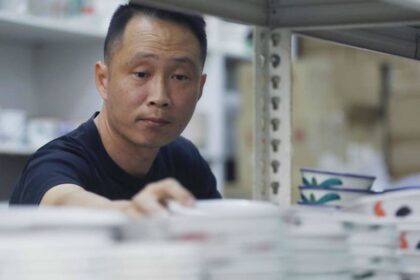The Birth of Revolution: From Wine Bar to Culinary Landmark
In the ever-evolving landscape of Singapore’s dining scene, few transformations have captured the imagination quite like the journey from RVLT, a beloved natural wine bar, to Revolution, a groundbreaking restaurant at Fritz Hansen Place. This metamorphosis is more than a simple rebranding—it’s a bold collaboration between the worlds of gastronomy and design, spearheaded by Fritz Hansen Asia CEO Dario Reicherl and RVLT founders Alvin Gho and Ian Lim. The result is a destination where culinary artistry, iconic furniture, and a spirit of camaraderie converge in a singular experience.
- The Birth of Revolution: From Wine Bar to Culinary Landmark
- Why Did RVLT Transform? Understanding the Shift
- The Design Revolution: Dining Amidst Danish Icons
- The Culinary Vision: Modern Comfort Food with a Twist
- Community and Camaraderie: The Heart of Revolution
- Design Trends: Revolution in the Context of Singapore’s Dining Scene
- Reception and Impact: How Has Revolution Been Received?
- In Summary
Revolution occupies a unique space within an industrial building on Henderson Road, sharing its home with the new Fritz Hansen showroom. This partnership was born out of serendipity: as Fritz Hansen sought a fresh location for its renowned Danish furniture, RVLT was preparing to close its doors, facing the post-pandemic realities of shifting customer habits and rising costs. For Gho and Lim—longtime friends and passionate advocates for natural wine—the opportunity to reinvent their concept was irresistible.
Why Did RVLT Transform? Understanding the Shift
RVLT had built a loyal following since its inception in 2006, offering a relaxed, unpretentious space for wine lovers. The bar was famous for its innovative approach: instead of a traditional wine list, guests chose from a vibrant wine wall, making the world of natural wines accessible and fun. Over time, RVLT expanded its offerings, bringing in chef Sunny Leong, whose modern comfort food with playful twists became a signature draw.
However, the COVID-19 pandemic changed everything. While RVLT initially saw a surge in business as locals sought out familiar haunts, the long-term impact was a shift in how people dined and socialized. Fewer customers ventured out, and operational costs soared. Gho and Lim recognized that to survive—and thrive—they needed to evolve. Thus, Revolution was born, not as RVLT 2.0, but as a distinct entity with its own identity and ambitions.
From Wine Bar to Restaurant: What’s Different?
Revolution retains the welcoming spirit and some signature dishes of RVLT, but it is fundamentally a restaurant rather than a bar. The focus has shifted to modern comfort food, guided by chef Leong’s creative use of seasonal produce. The wine program remains robust, with a continued emphasis on natural wines, but the experience is now anchored in a full dining menu and a refined, design-forward setting.
As Gho explained in an interview, the goal was to create a place where “dining, design, and camaraderie meet.” The partnership with Fritz Hansen allows guests to enjoy their meal surrounded by iconic Danish furniture, blurring the lines between showroom and restaurant. This innovative approach sets Revolution apart in a city known for its competitive food and beverage scene.
The Design Revolution: Dining Amidst Danish Icons
Singapore’s restaurant scene has increasingly embraced the idea that decor is as crucial as the cuisine. Revolution takes this to new heights by integrating the Fritz Hansen showroom directly into the dining experience. Guests are seated among legendary pieces like the Egg Chair and Swan Chair, designed by Arne Jacobsen, and other modern classics that have defined Scandinavian design for decades.
This fusion of food and furniture is not just aesthetic—it’s experiential. The industrial setting, softened by the warmth of wood and the elegance of Danish design, creates an atmosphere that is both sophisticated and inviting. The space encourages guests to linger, converse, and immerse themselves in both culinary and visual pleasures.
Such attention to design echoes broader trends in Singapore, where restaurants like Tamba have also made headlines for their immersive interiors. As highlighted by HungryGoWhere, the integration of art, craft, and storytelling into restaurant spaces is redefining what it means to dine out in the city.
The Culinary Vision: Modern Comfort Food with a Twist
At the heart of Revolution’s appeal is its menu, crafted by chef Sunny Leong. Drawing on his experience at RVLT and a deep appreciation for seasonal ingredients, Leong delivers dishes that are both familiar and surprising. The food is described as “modern comfort food with a playful twist”—think elevated classics, inventive small plates, and bold flavors that pair beautifully with natural wines.
Signature dishes from the RVLT era remain, offering a sense of continuity for longtime fans. However, the menu is designed to evolve, reflecting the team’s commitment to creativity and excellence. Lunch service is already underway, with plans to expand into dinner, ensuring that Revolution can cater to a wide range of diners and occasions.
Natural Wine: The Soul of the Experience
Natural wine remains central to Revolution’s identity. For the uninitiated, natural wines are made with minimal intervention, often using organic or biodynamic grapes and little to no added sulfites. The result is a diverse array of flavors and styles, often more expressive and unpredictable than conventional wines.
Gho and Lim have long championed natural wine, helping to demystify it for Singaporean drinkers. At Revolution, the wine wall concept continues, inviting guests to explore and discover new favorites in a relaxed, approachable setting. This commitment to education and exploration has helped build a community of regulars who appreciate both the product and the philosophy behind it.
Community and Camaraderie: The Heart of Revolution
One of the defining features of RVLT was its sense of community. Regulars were not just customers—they were part of a family, united by a love of good food, great wine, and lively conversation. Revolution aims to preserve this spirit, even as it expands its ambitions and audience.
As Lim noted, “We wanted to create a place where people could come together, relax, and feel at home.” This ethos is evident in everything from the communal tables to the friendly, knowledgeable staff. The transition from bar to restaurant has not diminished the sense of belonging; if anything, it has deepened it, as old friends and new faces gather in a space that feels both fresh and familiar.
Challenges and Opportunities in a Changing Industry
The transformation from RVLT to Revolution was not without its challenges. The pandemic forced many in the hospitality industry to rethink their business models, adapt to new regulations, and find ways to stay relevant in a rapidly changing world. For Gho, Lim, and Reicherl, the key was to embrace change rather than resist it.
As Gho reflected, “We saw an opportunity to do something different, to bring together our love of food, wine, and design in a way that hadn’t been done before in Singapore.”
This willingness to innovate has positioned Revolution as a leader in the next wave of Singaporean dining—one that values experience, authenticity, and creativity as much as the food itself.
Design Trends: Revolution in the Context of Singapore’s Dining Scene
Revolution is part of a broader movement in Singapore, where restaurants are increasingly defined by their design as much as their menus. Venues like Tamba have demonstrated the power of immersive interiors, using art, craft, and storytelling to create memorable experiences. At Revolution, the partnership with Fritz Hansen elevates this trend, offering guests the chance to dine amidst some of the world’s most celebrated furniture designs.
This approach reflects a growing recognition that dining is about more than just eating—it’s about atmosphere, connection, and discovery. By blurring the boundaries between restaurant and showroom, Revolution invites guests to engage with their surroundings in new and meaningful ways.
Reception and Impact: How Has Revolution Been Received?
The response to Revolution has been overwhelmingly positive. Regulars from the RVLT days have embraced the new concept, appreciating the continuity of spirit and the enhancements in food and design. Newcomers are drawn by the buzz surrounding the collaboration and the promise of a unique dining experience.
Social media has played a significant role in spreading the word, with posts highlighting the venue’s striking interiors and innovative menu. As noted by Channel NewsAsia, Revolution has quickly become a hot spot for those seeking natural wine, modern dining, and Danish design—all under one roof.
Industry observers see Revolution as a model for the future of dining in Singapore, where collaboration, creativity, and community are key to success. The restaurant’s ability to adapt and innovate in the face of adversity has set a new standard for what is possible in the city’s competitive food and beverage landscape.
In Summary
- Revolution is the result of a collaboration between Fritz Hansen Asia CEO Dario Reicherl and RVLT founders Alvin Gho and Ian Lim, transforming a beloved wine bar into a design-driven restaurant.
- The venue merges modern comfort food, natural wine, and iconic Danish furniture in a unique industrial setting on Henderson Road.
- The shift from RVLT to Revolution was driven by post-pandemic changes in customer habits and a desire to innovate in a challenging market.
- Chef Sunny Leong leads the kitchen, offering a menu that balances signature dishes with creative new offerings based on seasonal produce.
- Revolution has been warmly received by both regulars and newcomers, setting a new benchmark for experiential dining in Singapore.
- The restaurant’s integration of design and dining reflects broader trends in the city, emphasizing atmosphere, community, and creativity.












